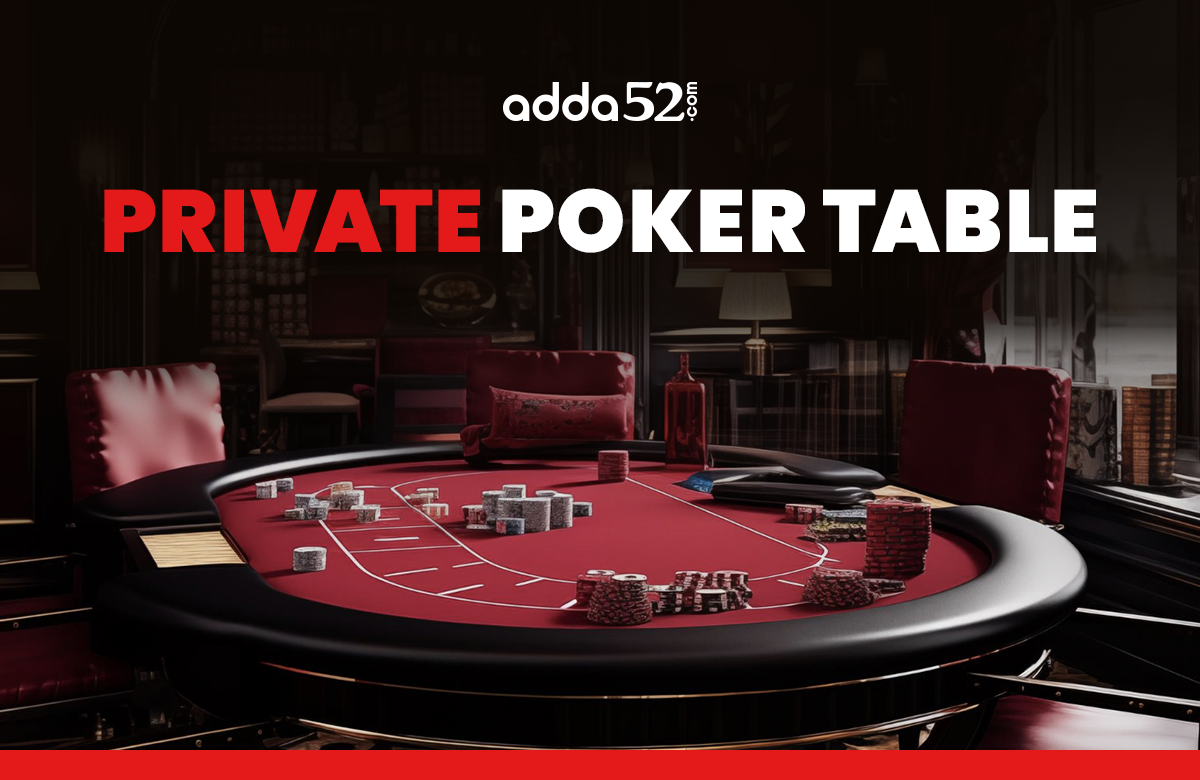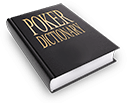Private Poker Table

Introduction
Playing poker in a casino can be a daunting experience, especially if you are a beginner. The pressure of taking the correct action at the right time, the rising stakes. These things can be overwhelming.
But what if you could create a poker table, set your own rules, decide the stakes, and even play with your friends?
A private poker table gives you all that. You just have to log in and create your private table. Read further to know how to create a private poker table and what are the benefits of it.
What is a Private Poker Table?
A private poker table is the most convenient way to play online poker with friends and family. The gameplay remains the same, you just create your poker table, invite friends, and a game or two.
Along with playing with friends, private poker tables also give you control over the stakes. You can also tailor the game and set your house rules, choose a variant, and length of the game.
Private Poker Table With Friends
- Playing poker on an online private table with friends is a great way to have fun, connect with loved ones, and enjoy the game in a comfortable and convenient setting.
- It offers a variety of games and stakes, giving you more control over the game, and it is available for you to play at any time.
- A private poker table online allows you to play with people you know and trust, this makes the game more enjoyable and less stressful. You don't have to worry about playing against strangers or whether they are playing fair.
- Online private tables offer the convenience of playing from the comfort of your own home. You don't have to leave your house or travel to a physical location to play.
- Online private poker room tables offer a wide variety of games and stakes. You can Play Texas Hold’em, Omaha, and other variants at different stakes.
- Lastly, you don’t have to worry about whether your friends are in the same city or not, you can play from anywhere and at any given point in time.
Advantages of Playing at Private poker Tables
Here are some of the advantages of playing poker at a private table:
- A private poker table lets you set rules, stakes, and game variants.
- You can play against your friends, which means you are familiar with their skills and weaknesses in the game.
- You can practice and enhance your gameplay.
- After every game, you can discuss your hands and strategies with your friends.
- It allows you to play with people you already know.
How do you set up a Private table to play with Friends?
- Sign up to create your account (skip this if you are already registered).
- Open the Game Lobby by clicking the "Play Instantly" button on the site.
- Select the "Private Table" tab from "Options" in the Game Lobby.
- Click on the "Create Table" button.
- Select the game variant (Texas Holdem/Omaha), table size, blinds and buy-in, and click on the "Create" button.
- Your table is ready to host a game with your friends and family and will be visible in the table list.
- Each table you create will have a unique PIN automatically generated by the system, which can be viewed on the right side of the table list.
- Send the unique code to your friends and invite them to play at your table.
Note: Only real money can be used to play online poker at private tables.
How to join a poker table created by your friend
- To join a private poker table created by a friend, first sign up for an account (if you haven't already).
- Open the game lobby by clicking the "Play Instantly" button on the site.
- Select the "Private Table" tab from the options in the game lobby.
- Enter the unique PIN code provided by your friend and click the "Join Table" button.
- The private online poker tables will then appear in the table list and you can begin playing.
Frequently Asked Questions
How many friends can I invite to play at my private table?
You can invite 2, 4, 6, or 9 players to join your table. You can play private online poker with friends on the Adda52 poker app. The app offers the option to create private tables and invite friends to play. Some sites also have mobile apps that allow for on-the-go play.
How much can I spend on the table blinds?
The minimum you can spend on table blinds is 1/2, while the maximum is 1k/2k.
What are the limits for buy-in to private poker games online tables?
The minimum buy-in amount is 20/80 and the maximum is 100K/ 400K.
How long will my private online poker table be active?
Once created, your private table will be active for 2 days.
Can I use my bonus funds to join a private table?
No, you can only use your real money balance to join a private table.
What types of games can be played on private tables?
You can play Texas Hold’em and Omaha on private tables with your friends.
How many tables can I make or play on?
The number of tables purely depends on the game and your skill. A beginner 2-4 table is fine, whereas an experienced player can handle 8 or more tables.
Can I create private tournaments to play with friends?
To create a table, choose a platform that offers this feature. Once you have selected a platform, follow the steps mentioned on its website and create a private table.
Is rake applicable on Private Tables?
No, Rake is not applicable on a private table.
Are Private Tables available on the desktop client?
Yes, private tables are available on the desktop clients.
Conclusion
If you are looking for a fun and relaxed way to enjoy poker, try creating your private poker table. Call your friends, set the stakes, decide your own rules and enjoy a night filled with laughter, bluffs, and some big wins.
